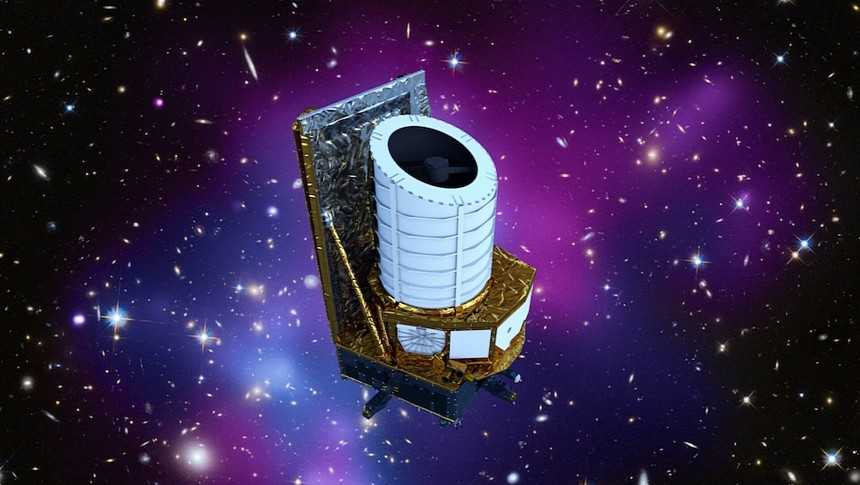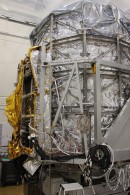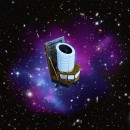We've known for almost a century now that the Universe is expanding, ever-increasing the distance that separates its stars and planets. It's not an idea easy to digest, because we're told the Universe doesn't grow into anything, as there's nothing beyond it. But we can still see it changing its scale, and as of recently it seems to be doing so at an accelerated pace.
It was about a quarter of a century ago when astronomers found the Universe's speed of expansion was accelerating. As Jason Rhodes, a senior research scientist at NASA's JPL says, the "universe’s accelerated expansion remains one of the most pressing mysteries in astrophysics."
That's because common sense and knowledge tell us the gravity of the Universe's objects would act on the expansion and gradually slow it down. But the exact opposite is happening, and steps are now being taken to shed more light on the subject.
We don't really know what causes the Universe to expand, so scientists have named the unknown driving force behind the process dark energy. It's something that’ll be studied intensively over the coming years, thanks to two new telescopes developed in Europe and the U.S.
The first is called Euclid, and it's set to be launched next month from Cape Canaveral, on board a SpaceX Falcon 9 rocket. The hardware will head to Lagrange Point 2 (L2), 1.5 million km (932,000 miles) from Earth, where it will park and start looking at the stars.
Euclid's main mission is to create a three-dimensional "map of the large-scale structure of the Universe across space and time." For that, it will have to look at billions of galaxies (a third of the entire sky) shining their light at us from as far out as 10 billion light-years.
In doing so, the telescope will allow astronomers to "measure dark energy in different ways and with far more precision than previously achievable," possibly opening the doors to a better understanding of the process.
Hopes are a potentially new and unknown energy component could be discovered, one that would better explain the process. If that's not what's happening, the acceleration could be explained by inner workings of gravity we don't fully understand yet. Either way, Euclid will help us get a better idea of what's going on.
If this telescope alone is not up for the task, sometime in 2027 the Nancy Grace Roman Space Telescope will join it in the vastness of space with pretty much the same mission. Although it will look at far less stars in a smaller portion of the sky, it will however provide a lot more detailed images, some of them dating as far back as three billion years in the past.
Unlike Euclid, which will solely focus on cosmology, Roman will also look for planets in nearby galaxies.
That's because common sense and knowledge tell us the gravity of the Universe's objects would act on the expansion and gradually slow it down. But the exact opposite is happening, and steps are now being taken to shed more light on the subject.
We don't really know what causes the Universe to expand, so scientists have named the unknown driving force behind the process dark energy. It's something that’ll be studied intensively over the coming years, thanks to two new telescopes developed in Europe and the U.S.
The first is called Euclid, and it's set to be launched next month from Cape Canaveral, on board a SpaceX Falcon 9 rocket. The hardware will head to Lagrange Point 2 (L2), 1.5 million km (932,000 miles) from Earth, where it will park and start looking at the stars.
Euclid's main mission is to create a three-dimensional "map of the large-scale structure of the Universe across space and time." For that, it will have to look at billions of galaxies (a third of the entire sky) shining their light at us from as far out as 10 billion light-years.
In doing so, the telescope will allow astronomers to "measure dark energy in different ways and with far more precision than previously achievable," possibly opening the doors to a better understanding of the process.
Hopes are a potentially new and unknown energy component could be discovered, one that would better explain the process. If that's not what's happening, the acceleration could be explained by inner workings of gravity we don't fully understand yet. Either way, Euclid will help us get a better idea of what's going on.
If this telescope alone is not up for the task, sometime in 2027 the Nancy Grace Roman Space Telescope will join it in the vastness of space with pretty much the same mission. Although it will look at far less stars in a smaller portion of the sky, it will however provide a lot more detailed images, some of them dating as far back as three billion years in the past.
Unlike Euclid, which will solely focus on cosmology, Roman will also look for planets in nearby galaxies.








